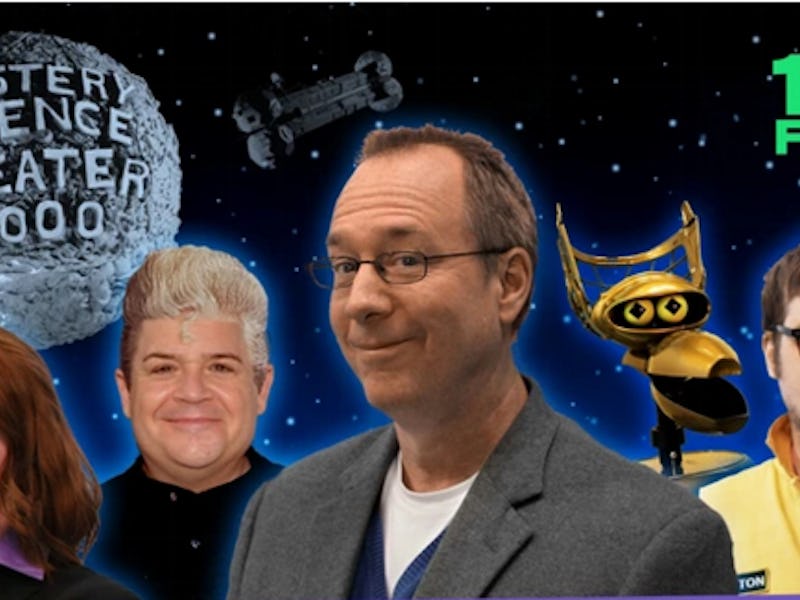What the 'MST3K' Kickstarter Success Tells Us About Crowdfunding
Crowdfunding means your favorite show or movie won't ever go away, and that may not be a good thing.

Earlier this week, the Kickstarter campaign for the revival of cult TV series Mystery Science Theater 3000, led by the show’s creator Joel Hodgson, came to an end. Unlike many crowdfunding efforts, MST3K came back to the tune of over $6 million in pledges, making it the biggest crowdfunding project of all time. It turns out it beat the previous record held by another canceled but beloved TV show, Veronica Mars, which funded a comeback movie with a successful $5.7 million Kickstarter campaign in 2013. It’s a big step for MST3K and its fans, who are affectionately known as “MSTies,” and an affirmation of the notion that the harebrained idea you started on Minnesota public access television 20 years ago can go from relative geek obscurity to a multi-million-dollar idea within days.
The fact that the MST3K Kickstarter made so much has given people pause. The entire concept of the show was borne out of making an extremely cheap-looking and inexpensive product to unleash upon the dorky masses. Hodgson and Co. were supposed to be slackers, and it was meant to seem like they didn’t put in any effort.
When they’re not sitting in front of the terrible movies they riff on, the characters are mostly seen in small interstitial skits on the Satellite of Love, which is supposed to be a massive spaceship but looks like a cobbled together backdrop made out of whatever props they could Krylon silver. To this day, the lead non-human characters are made out of a soap dish, ping pong balls, a plastic bowling pin, a lacrosse helmet face mask, and Tupperware panels for Crow T. Robot, while Tom Servo is made out of a gumball machine, a barrel-shaped coin bank, a toy car, and a plastic bowl. Star Wars droids they ain’t.
The ramshackle aesthetic is part of what makes the show funny. It’s campy, loose, and approachable. Based on Hodgson’s Kickstarter estimate, it would have cost $2 million to create three episodes, which he explained in a follow-up post on the Kickstarter page went towards things like campaign fees and rewards shipping costs as well as towards the logistics of creating the episodes themselves. But that amount still seemed high, too great for a humble little show-that-could that was graciously asking fans to band together and make it a reality again.
But this discrepancy gets to the crux of what its success means about the larger concept of crowdfunding. No matter how small the niche, no show or movie or once-loved example of pop culture will ever entirely die. That might not be a good thing. The individual worth of those pop culture touchstones may have been taken out of the hands of the individual executives who can act as executioners and into the hands of the creators or fans. Gone are the days where grassroots campaigns wrote letters — actually tangible pieces of paper! — and sent them in to networks like ABC to keep favorite shows like Twin Peaks from getting axed. We’ll be getting another season of Twin Peaks in 2017.
It’s an opposite but similar mentality that drives zillion-dollar tentpoles like Marvel or Star Wars. They’ll go on as forever franchises because they keep making money. Humble little TV shows can now be resurrected with a bunch of money and never go away because people can’t seem to give up both gigantic evergreen blockbusters or small, obscure TV shows they liked when they were kids.
After its cancellation, former MST3K guys (who are not involved in the Kickstarter) went on to create the show with a similar concept called RiffTrax. It allowed a natural evolution after the fact. Crowdfunding can be great in certain cases, but in the case of a long-dead TV show, maybe it should have stayed dead.